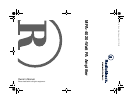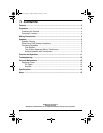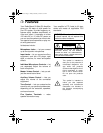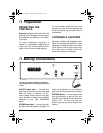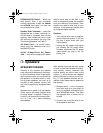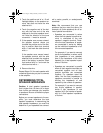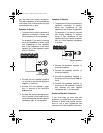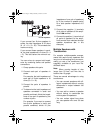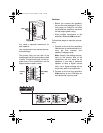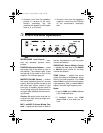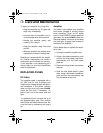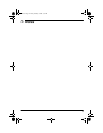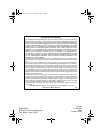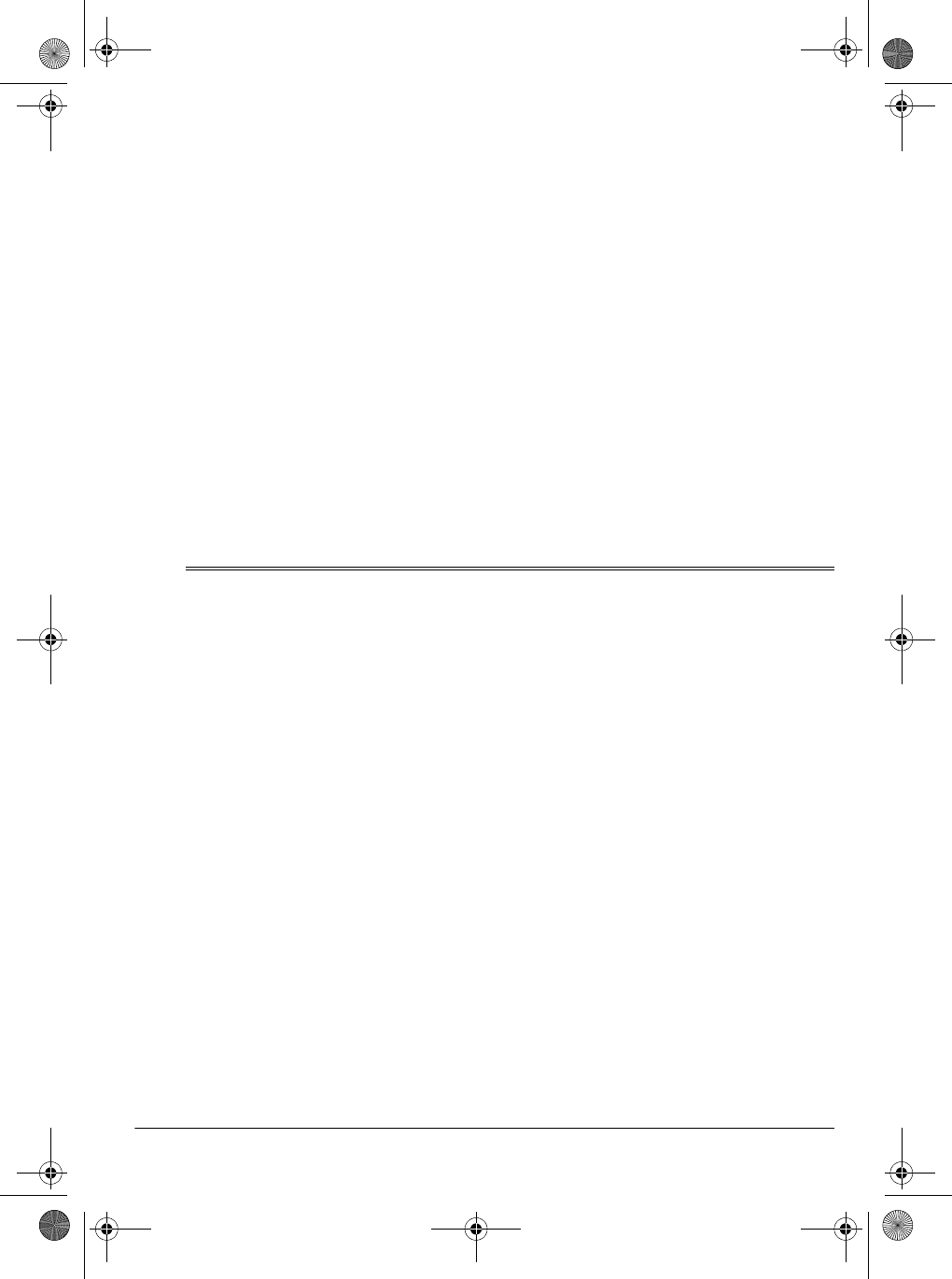
5
PHONO/AUX/CD Switch
— select the
input source. Even if you connected
auxiliary equipment to both the
PHONO
and
AUX/CD
input jacks, you can use
only one source at a time.
Speaker Push Terminals
— press the
appropriate tab to open a terminal. In-
sert the end of a speaker wire into the
opening, then release the tab to close
the terminal and secure the wire (see
“Connecting Speakers” on Page 7).
AC Power Cord
— to use AC power,
simply plug this attached cord into a
standard AC outlet.
4A/12V (4-Amp/12-Volt DC Power)
Jack
— connect the supplied DC power
cable’s barrel plug to this jack if you
want to temporarily power the amplifier
from your vehicle’s 12-volt battery. Then
connect the cable’s other end to your
vehicle’s 12-volt accessory socket (such
as a cigarette-lighter socket).
Cautions:
• Your vehicle must have a negative-
ground electrical system. If you are
not sure it does, check with your
vehicle dealer.
• Unplug the AC power cord before
you connect the DC power cable.
Likewise, disconnect the DC power
cable before you plug in the AC
power cord.
ˆ
Speakers
SPEAKER PHASING
Phasing is the direction the speaker
cone moves with reference to the polari-
ty of the connection wires. Proper phas-
ing is important when you use more than
one speaker in the same room or area.
Out-of-phase speakers can lose up to
one-half of their potential volume, and
can have a significantly decreased bass
effect.
Speakers are in phase if all the speaker
cones move in the same direction when
an equal signal is applied. Phasing is
correct if you observe the correct polari-
ty (+ to + and – to –) when connecting
the speakers.
Most speaker terminals are color-coded
or have a mark that indicates the termi-
nal’s polarity. Usually, terminals with
positive polarity are red or have a plus
symbol (+), and terminals with negative
polarity are black or have a minus sym-
bol (–). If the speaker terminals are un-
marked, follow these steps to determine
their polarity.
1. Remove about 1 inch of insulation
from both ends of a short piece of
wire (not supplied; available at your
local RadioShack store). Then twist
the exposed wire to secure all its
strands.
2. Connect one end of the wire to one
of the speaker terminals.
32-2001.fm Page 5 Friday, February 4, 2000 7:53 AM



